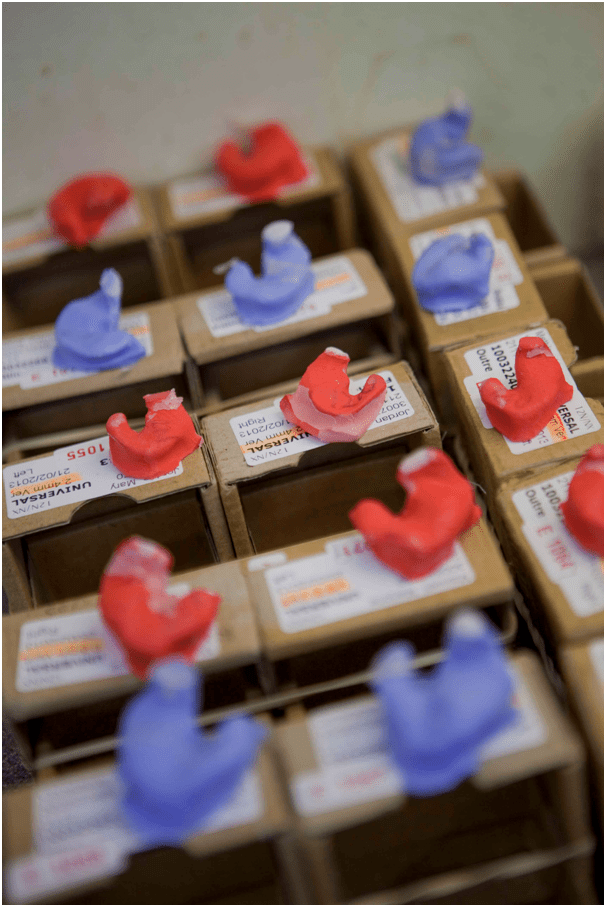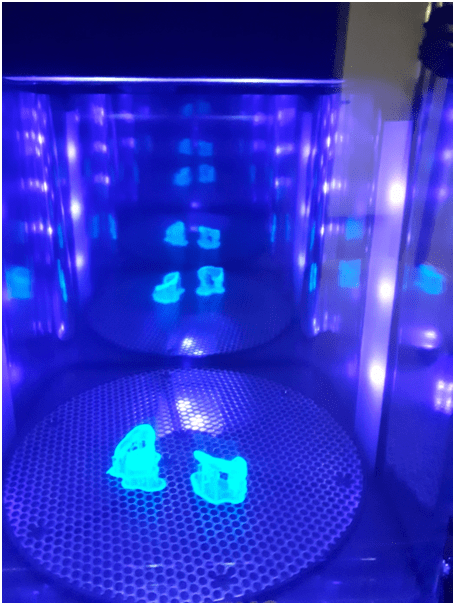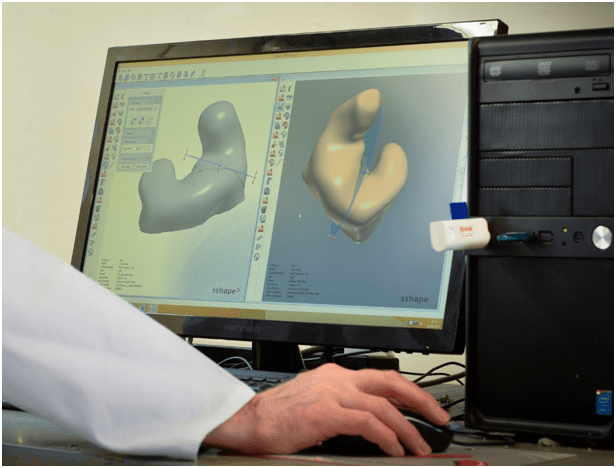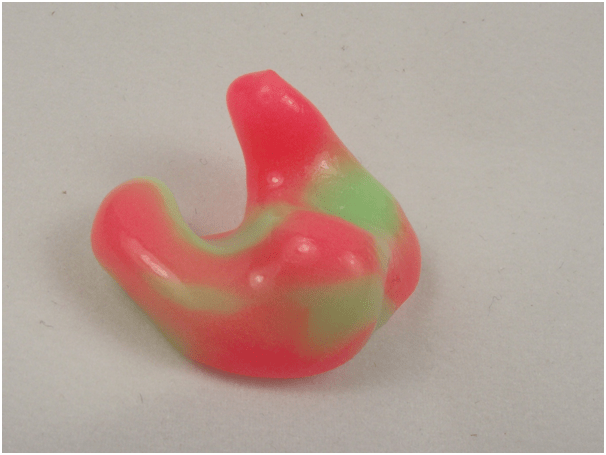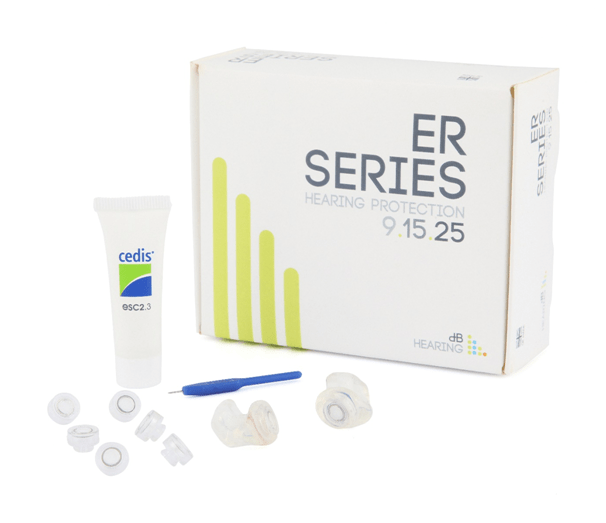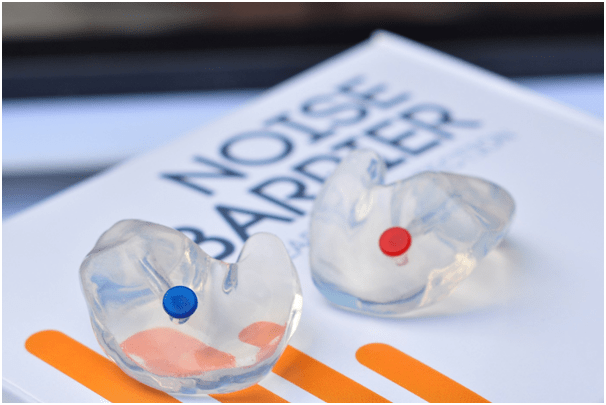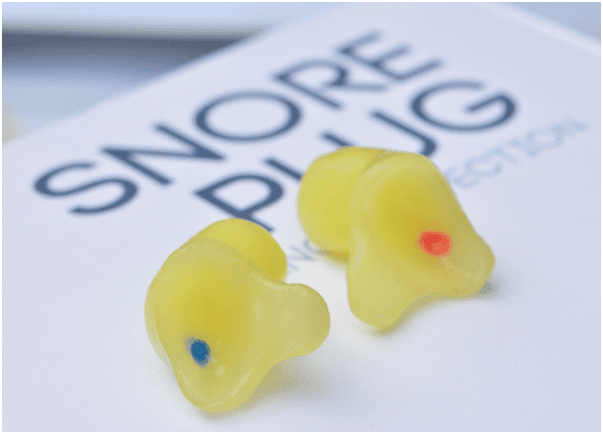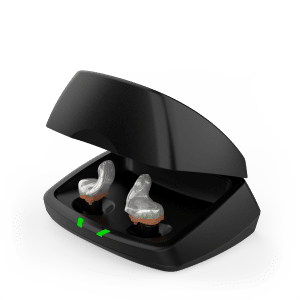An audiologist’s day out in an earmould lab.
On the 28th of March I was given the opportunity to visit behind the scenes of the Universal lab based in Stockport. Universal have been making earmoulds since 1966 and have seen the changes from using dental techniques for mould making to the more recent 3D mould making technique. They have a careful process to keep things in order starting with inputting all the orders and highlighting the ones that are priority, ultimately, to keep patients and clients satisfied. Paul, who started off working in dentistry was my very knowledgeable tour guide for the day.
Earmould Making Process 1
Polishing the hard earmoulds.
Earmould Making Process 2
Some earmoulds such as the microflex type needs to made in a different way and requires a gel surround. First this gel is melted at 35 degrees. This mould is a softer one and suitable for more profound hearing losses. This is because they form a tighter seal required to reduce feedback from the extra output that is needed. Similarly, Biopore moulds are encased in a gel and then cooked in what looks very much like a pressure cooker. Biopor is another non allergic type earmould bue a softer alternative.
Sorting the earmoulds
The next room was full of ear moulds of different colours and glitter, specifically for biopore or microflex earmoulds. This was definitely a child’s colourful heaven. It was great to see them all lined up ready for James to sort.
Hand finished earmoulds
At the mould lab they take extra care to make sure that the end product is of a high standard and there is a great team at the hub of the mould lab making sure this is achievable. Some earmoulds need a second stage where a UV light is used before the mould making process is complete.
NHS earmould alternatives
Another type of earmould that is being processed is called a click mould and it is suitable for those with open hearing aid fitting wires. If you are a patient struggling to keep the dome/rubber in, it is possible to take an impression and make a click mould that will fit better and feel more comfortable. This is made using 3D technology. If you are an NHS patient and your department is unable to make this for you, it possible just to have the mould made privately.
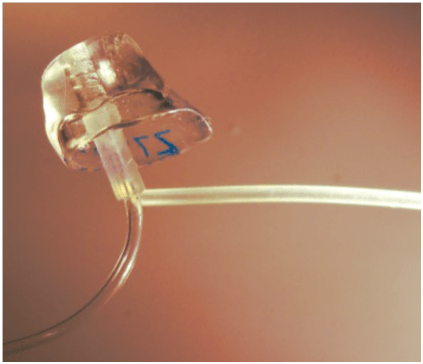
Earmould tubing
We then took a look at some pretty fantastic machinery for making mould tubing…and there was reels of it. First, the resin is inserted into the machine and then processed at four different temperatures, the material then flows through a syringe type end which blows pressure through the material to turn it into a tube, which is then motioned towards the reel.
There are plenty of different types of tubing available too. For some people a standard tube is fine, others need a thicker walled tubing, others an anti-condensation tubing if you suffer with a lot of perspiration. Your audiologist will usually decide which type is the most suitable for you.
3D Digital mould making
The final stop was a look at the 3D process. This requires a different type of material to the standard mould making procedure but gives the flexibility for the lab to re-issue moulds instantly as impression shapes can be stored. There are two types of machines involved, one allows you to make the hard impression and one allows you to make the cast if two parts to the mould is required. The software also allows you to see what the ear mould will look like at the final stage and gauge where any filters e.g. for musicians plugs might go or the tubing bore e.g with the ER series of ear protection.
Other earmould types
Many patients will be unaware that there are many different types of ear mould material and whilst one might not be suitable there may be another type that will be, so always check with your audiologist if you are unhappy with your current mould or it is causing infections. You can also book an impression appointment with us. If you are an NHS patient, it is chargeable as a private service but we can customise the mould to you. It will help if you can bring a copy of your hearing test results and your existing earmoulds.
There are a great range of colours available, mainly for children but for those adults that want a bit of colour too. You can have a range of colours, including a marble effect.
You could also choose to have your favourite superhero or football team sticker on your earmould. It may even be possible to have your own custom image lasered on to the earmould.
Noise Protection
You don’t need to be a musician or work in a factory for noise exposure to damage your hearing. Ear protection can be made for anyone that is exposed to loud noise and for people that want extra protection to prevent hearing loss in the long term. A dentist or dental hygienist using loud drills on a daily basis are also at risk of hearing damage, for whom the ER range of ear protection would be a good choice.
For a student who regularly attends a noisy concert, festivals or gigs or wants to block out the noise of his/her flat mates when revising for exams, the NoiseBarrier might be a good solution. This type would be good for motorcyclists too.
Swim plugs
If you are a keen swimmer and dislike the water in your ears or have a history of perforations and/or infections then it will be possible to make customised swim plugs. You can choose the colour and they are floatable.
Snore plugs/Sleep plugs
For that noisy snoring partner that is stopping you from sleeping, have a think about some snore plugs which will help dampen the noise but still give you some comfort as they are customised to the shape of your ear. These will not completely block out all sound but provide more comfort than foam plugs.
If you want to speak to someone about your options, you can get in touch here.

